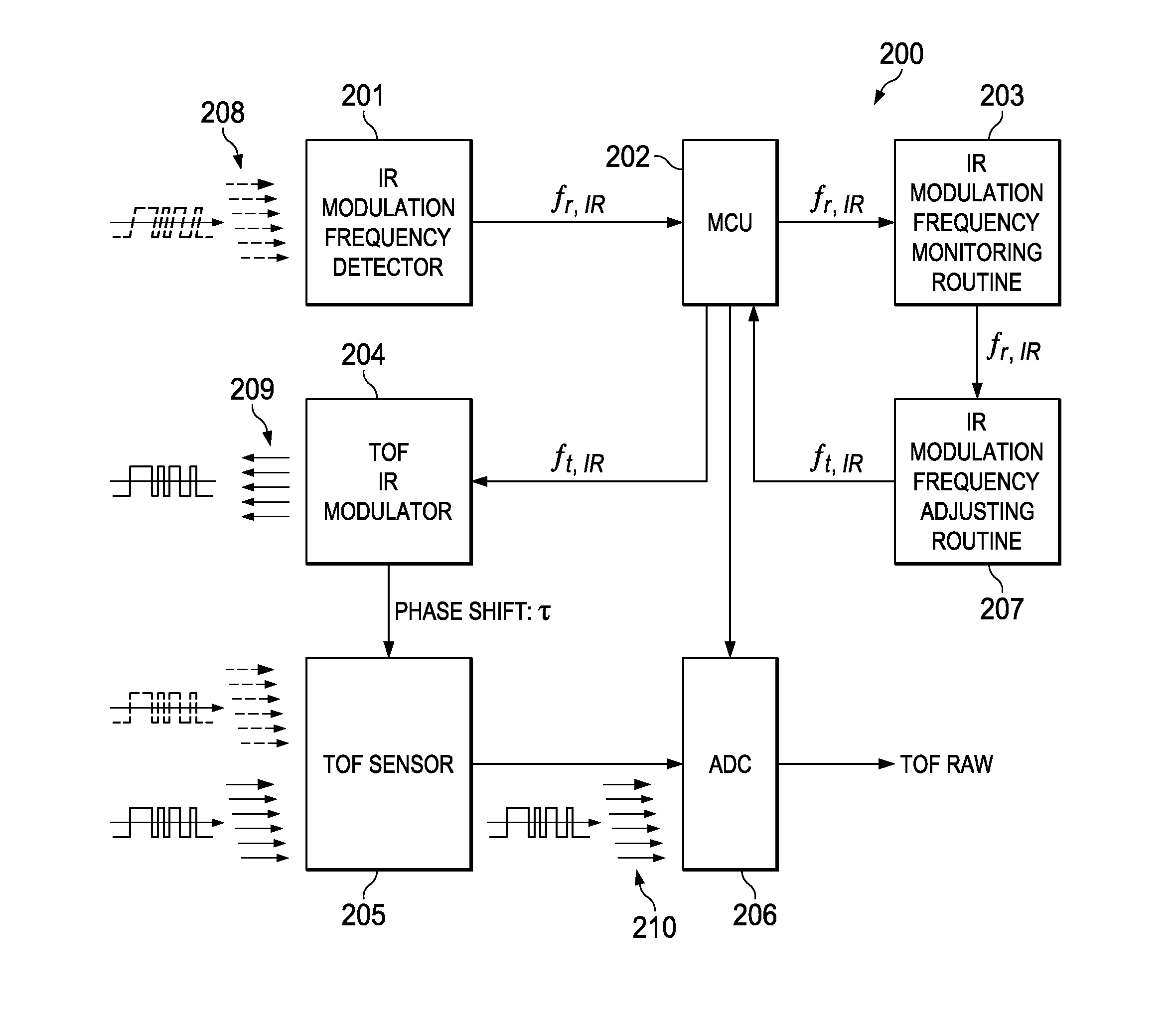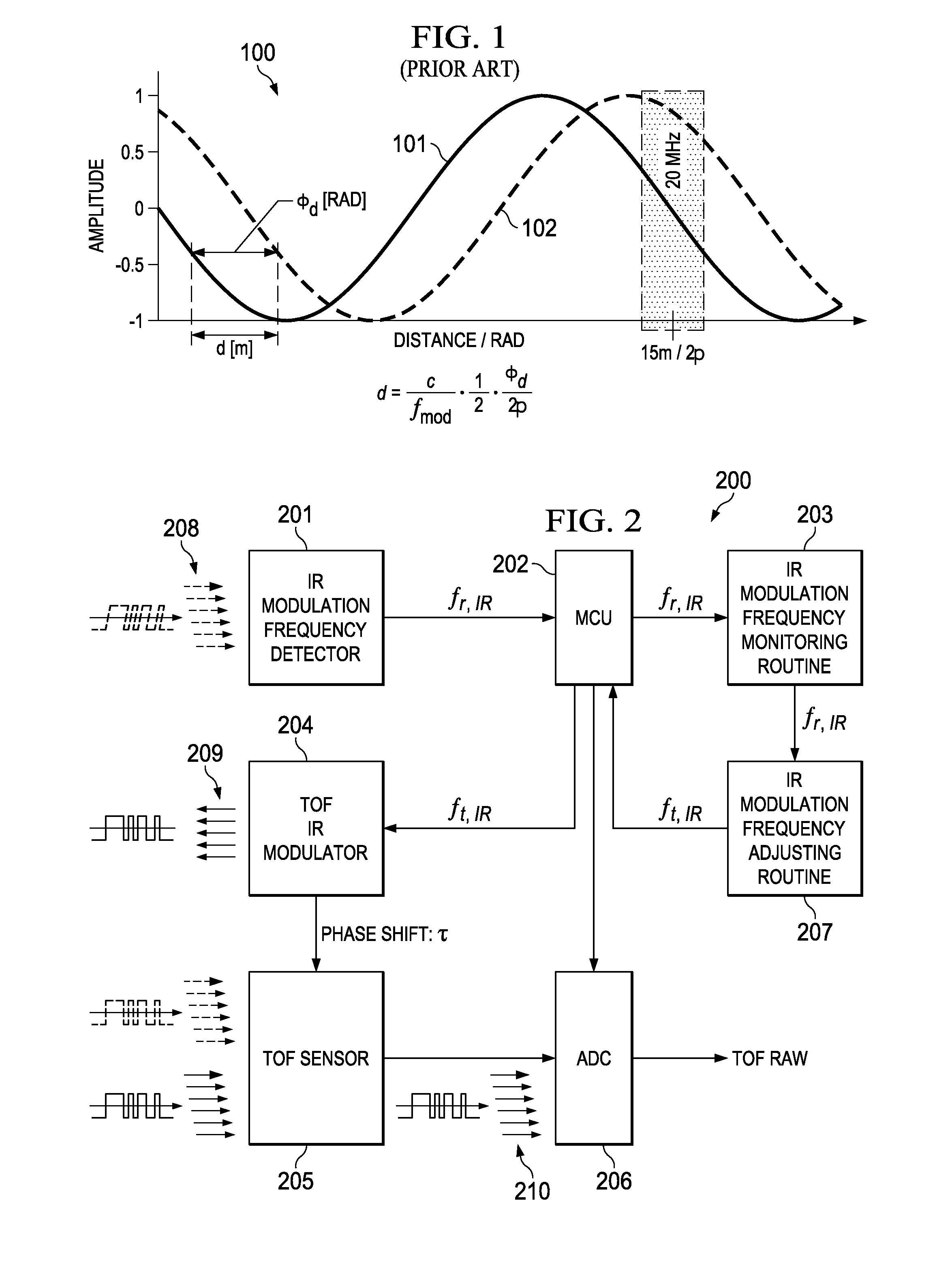Method for dynamically adjusting the operating parameters of a tof camera according to vehicle speed
a tof camera and operating parameter technology, applied in the field of time of flight sensor system, can solve the problems of almost impossible to assign individually separate tof modulation frequencies for each sensor product, and the cross-interference of modulated illumination between multiple tof sensors has not been considered, so as to achieve the effect of extending the camera range, avoiding cross-interference of modulated illumination among multiple tof sensors, and allowing more time for speed adjustmen
- Summary
- Abstract
- Description
- Claims
- Application Information
AI Technical Summary
Benefits of technology
Problems solved by technology
Method used
Image
Examples
Embodiment Construction
[0021]A TOF (Time Of Flight) sensor delivers a very accurate depth measurement and can be widely applied to applications within various environments. However, TOF sensor technology intrinsically has a cross interference problem among TOF sensors due to IR illuminations from multiple TOF sensors employing the same modulation frequency. Since IR modulation frequency is directly related to a covered depth range of TOF, there is the likelihood that the same modulation frequency of TOF IR illumination will be selected among TOF sensors in place.
[0022]For example, for applications targeting a mid range depth map, in many cases a 20 MHz IR modulation frequency is chosen. Interference from TOF sensors with the same IR modulation frequency (20 MHz) can significantly impact on depth accuracy of each sensor.
[0023]The described invention provides a method to avoid IR interference among TOF sensors by combining the IR modulation frequency detector with logic for dynamic adjustment of the IR tran...
PUM
 Login to View More
Login to View More Abstract
Description
Claims
Application Information
 Login to View More
Login to View More - R&D
- Intellectual Property
- Life Sciences
- Materials
- Tech Scout
- Unparalleled Data Quality
- Higher Quality Content
- 60% Fewer Hallucinations
Browse by: Latest US Patents, China's latest patents, Technical Efficacy Thesaurus, Application Domain, Technology Topic, Popular Technical Reports.
© 2025 PatSnap. All rights reserved.Legal|Privacy policy|Modern Slavery Act Transparency Statement|Sitemap|About US| Contact US: help@patsnap.com


